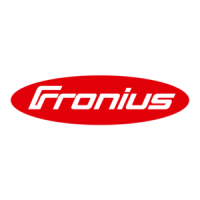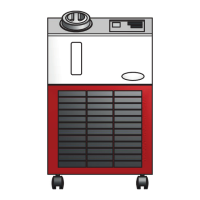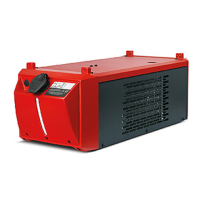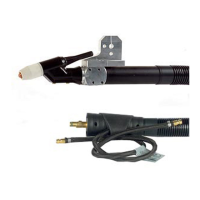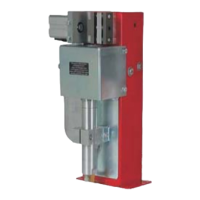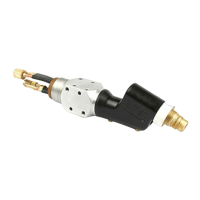35
Cause: Phase missing on the power source
Remedy: Check mains lead, main switch and contactor
Cause: Secondary commutator faulty
Remedy: Check commutator
Irregular wirefeed speed, welding wire forms a loop between feed rollers and torch
wire inlet nozzle
Cause: Wirespool brake applied too lightly/strongly
Remedy: Adjust wirespool brake
Cause: The borehole of the contact tube is too narrow
Remedy: Use correct contact tube
Cause: Faulty wire feed liner in torch
Remedy: Check liner for kinks, inner diameter, length, dirt, etc.
Cause: Feed rollers are unsuitable for the wire being used
Remedy: Match up feed rollers and welding wire
Cause: Feed rollers have the wrong contact pressure
Remedy: Optimize the contact pressure
Cause: Quality of welding wire is not up to standard
Remedy: Change welding wire
Cause: Internal machine fault
Remedy: Contact After-Sales Service
Wirefeeder motor not running / cannot be adjusted
Ready indicator lights up
Cause: Faulty fuse F1, F2, F3 or F7
Remedy: Check fuses
Cause: Wirefeeder motor faulty
Remedy: Change wirefeeder motor (After-Sales Service)
Cause: Wirefeeder adjuster faulty
Remedy: Change wirefeeder adjuster (After-Sales Service)
Cause: On separated version: Fault in interconnecting hosepack
Remedy: Check hosepack connections
Cause: Internal machine fault
Remedy: Contact After-Sales Service
Welding wire is welded to the contact tube or weld pool
Cause: Afterglow time adjuster has not been set to achieve optimum results
Remedy: Correct afterglow time
Main torch body and hosepack become very hot
Cause: Design dimensions of the torch are not sufficient for this task
Remedy: Observe duty cycle and loading limit
Cause: On water-cooled machines: flow rate too low
Remedy: Check water level, flow rate and cleanliness
Variosynergic
3400/4000/5000
power source
(continued)
